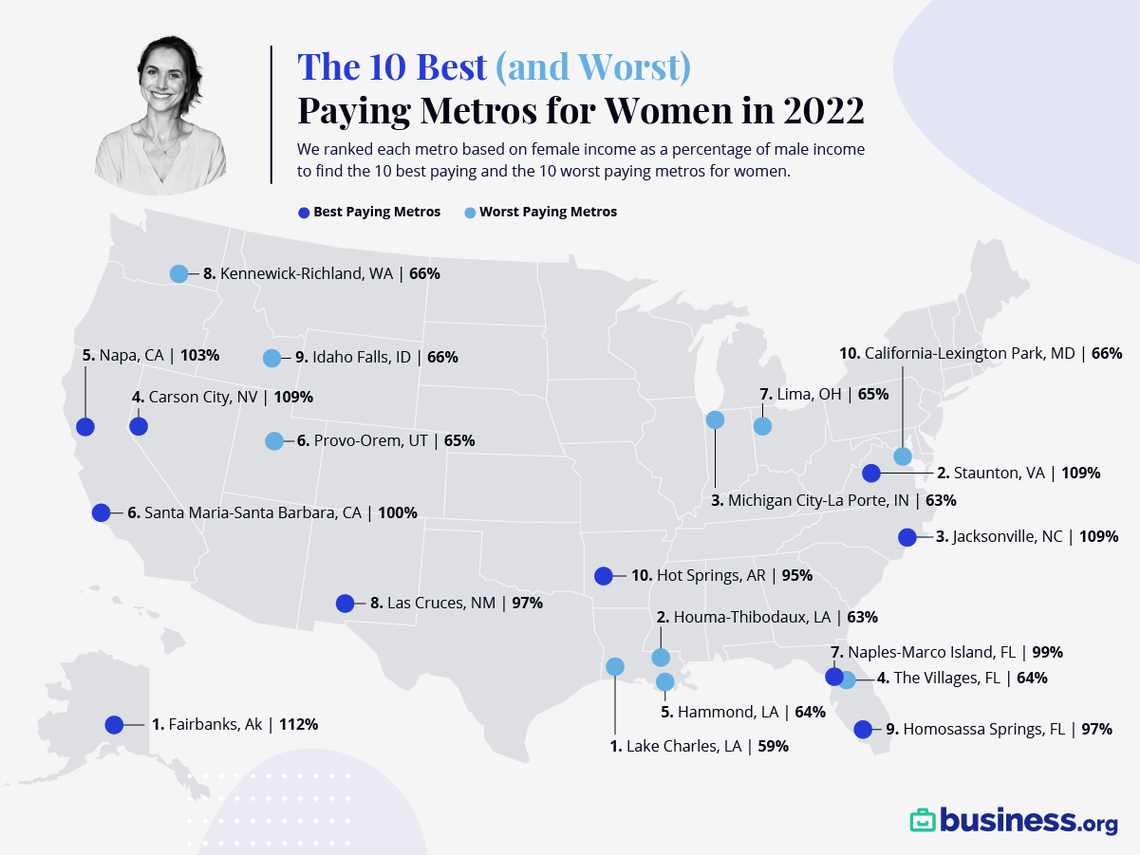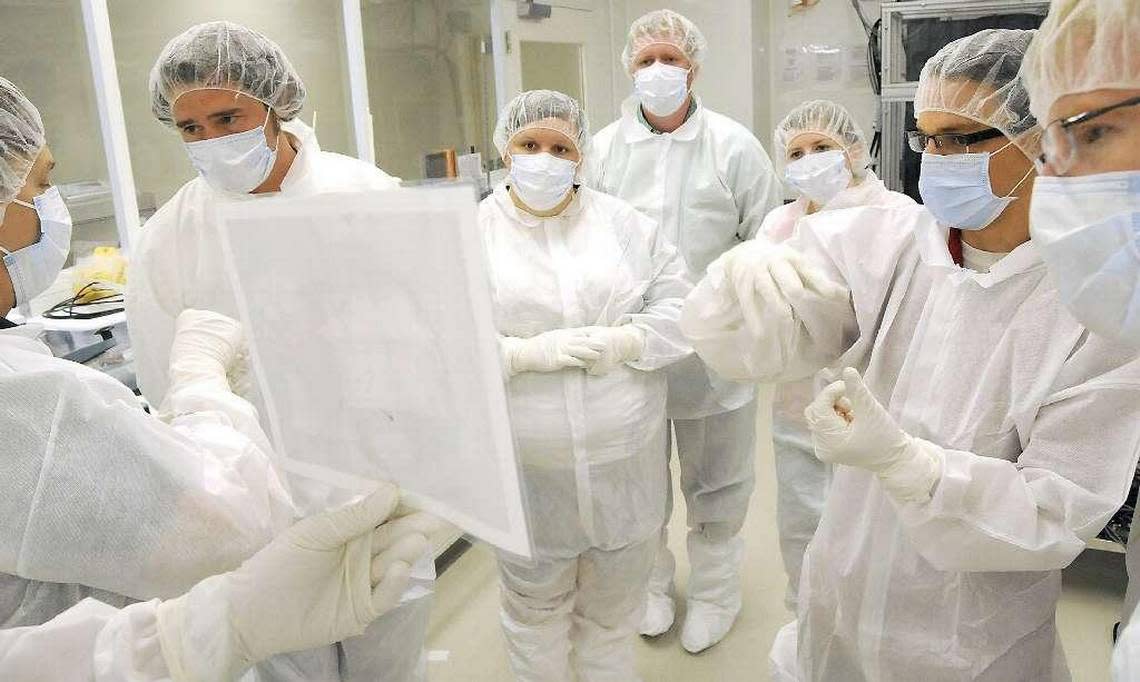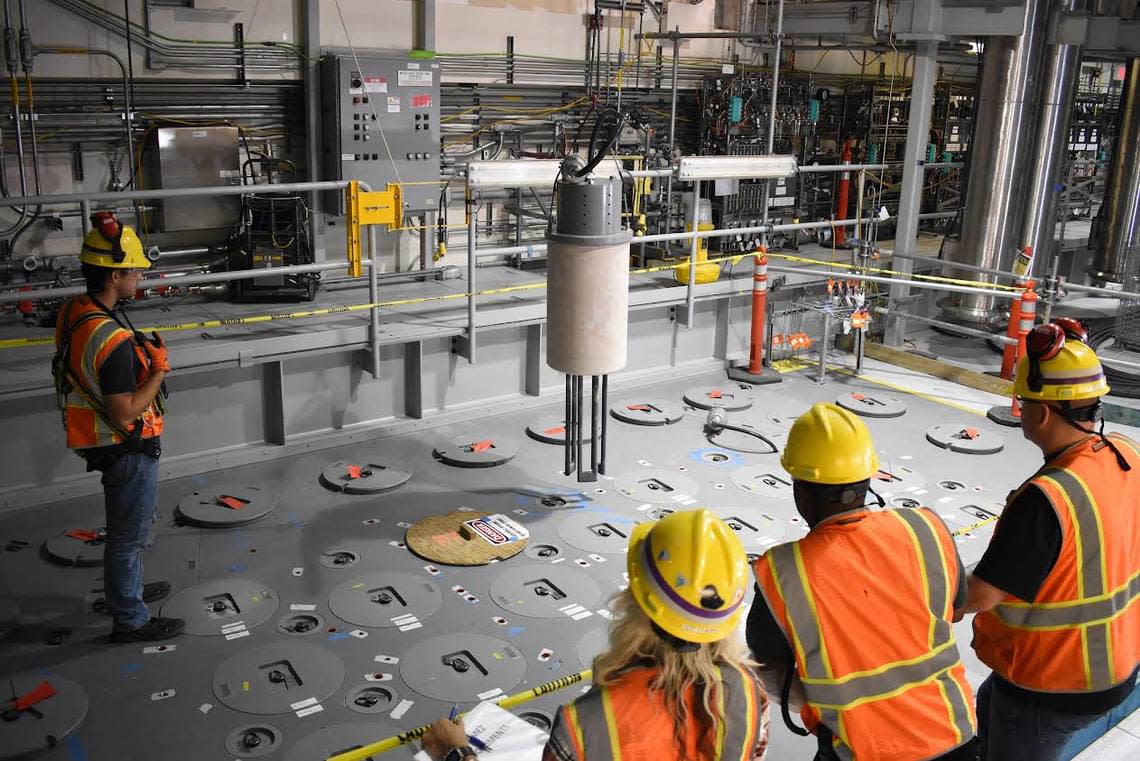Tri-Cities has one of the largest gaps between men’s and women’s pay in the nation
Women in Richland and Kennewick bring home paychecks that are among the lowest in the nation compared to what men in the same cities make, according to a data analysis done by Business.org.
It ranked cities in Benton County as the eighth worst paying metro area in the nation for women. Ninth worst was Idaho Falls, Idaho.
Like the Tri-Cities, Idaho Falls has a strong Department of Energy presence and many STEM — science, technology, engineering and math — jobs in a smaller metro area.
That raises the possibility that the disparity in wages is due to women being underrepresented in STEM jobs, which on average pay better than other jobs nationwide.
The Tri-Cities has the highest ratio of scientists and engineers per capita in the nation, according to Washington State University Tri-Cities.
In both the Kennewick and Richland metro area and in Idaho Falls women brought home about 66% of the pay of men. That compares to 83% nationwide.
The ranking was based on the median income of full-time, year-round workers in each area as reported by the U.S. Census Bureau’s 2021 American Community Survey.
Women in Richland and Kennewick made a median of $41,900 compared to men’s nearly $64,400, according to Business.org.
In Benton and Franklin counties, the DOE Hanford nuclear reservation site and DOE’s Pacific Northwest National Laboratory account for a disproportionate amount of wages paid in the area for the number of employees.
DOE projects account for about 11.3% of jobs in Benton and Franklin counties. But they pay about 23.4% of all wages in the two counties, according to data from the Tri-City Development Council.

The majority of Hanford and PNNL workers live in the Tri-Cities area, centered around Richland, Kennewick and Pasco in Franklin County.
Both Hanford and PNNL employ more men than women.
The Hanford site workforce is 73% male and 27% female. That’s according to data available for those working directly for the federal government and companies with DOE prime contracts but not subcontractor employees.
At PNNL the split is 61% men and 39% women.
Many of the jobs for the DOE work are STEM, and nationwide women are underrepresented in that workforce, according to the U.S. Census Bureau.
It reported a year ago that nationwide men make up 52% of the total workforce but hold 73% of STEM jobs.
Men hold an even higher percentage of engineering jobs nationwide, 85%. Women have made gains since 1970 when men held 97% of engineering jobs.
The U.S. Census Bureau reported that nationwide women employed in STEM occupations earned less than men in STEM occupations, but more than women in non-STEM jobs.
Both Hanford and PNNL officials said they were committed to providing employment opportunities for women and have programs in place that could increase the diversity of their workforces.
PNNL pay equity
PNNL, operated for DOE by Battelle, is the largest single employer in the region and Battelle prides itself on having an attractive compensation package, said April Castaneda, chief human resources officer.
Battelle strongly believes in pay equity. “It is part of who we are and how we operate,” she said in a statement.
It has strong pay structures and practices that promote equitable pay, she said.

Not only is pay equity the right thing to do, but it improves productivity and morale, and helps attract talented staff, she said.
Battelle regularly has internal and external reviews of pay practices, she said.
At PNNL the number of women hired has been growing, with 43% of new hires in the past fiscal year women. There also has been a sizeable increase in the number of women managers over the past decade. Women now make up half of PNNL’s executive team.
PNNL also has a STEM education program with a goal of increasing the percentage of women and other underrepresented groups in science fields nationally.
One of its programs is the Young Women in Science summer internships experience. High school girls are picked to spend 10 weeks working with a scientist-mentor in a specific research area and participate in educational and leadership development activities.
Hanford site outreach
Hanford also is covered by a DOE program that uses corporate approaches to monitor workforce requirements and recruitment of women to STEM jobs.
Among the organizations it relies on are the Association for Women in Science, the Black Career Women’s Network, Federally Employed Women, Society of Women Engineers and Women in Cybersecurity.
“The Department of Energy is committed to advancing women’s participation and leadership in the workforce and in furthering science, technology, engineering and math ... education by partnering with stakeholders to inspire women to pursue careers in the STEM field,” said Kristen Ellis, the STEM advisor to the DOE Office of Environmental Management, which includes management of Hanford.

The office is increasing internships and developing curriculum in collaboration with universities to help establish a pipeline of diverse, highly qualified STEM professionals, she said.
Contractors at Hanford have made significant investments in STEM education and support of programs supporting women in STEM jobs.
For example, Bechtel National, the Hanford DOE contractor for the site’s vitrification plant, just celebrated 50 years of partnering with the Society of Women Engineers, and it recruited with the organization in October for Hanford vitrification plant jobs.
The Hanford vitrification plant was the location of the first pilot chapter for a Women@Bechtel employee resources group in 2014 to promote the professional development and career advancement of women at all levels of the company and build a more inclusive environment for women at Bechtel.
Other Hanford site contractors also provide financial and volunteer support to several community organizations and nonprofits that encourage women to enter STEM career fields.
Washington River Protection Solutions, for instance, has contributed $1.8 million to Tri-Cities area colleges and career development programs since 2008, plus $900,000 to K-12 educational outreach programs.
Central Plateau Cleanup Co., a newer Hanford contractor, donated $30,000 to the STEM Foundation in November to support STEM experiences for students and also is represented on the organization’s board of directors.
Hanford Mission Integration Solutions reviews all salaries, both internally and through an external third party, for pay equality and makes adjustments if a disparity is identified.
Hanford produced plutonium from World War II through the Cold War for the nation’s nuclear weapons program. Now the nation spends about $2.5 billion a year on environmental cleanup of radioactive and other chemical contamination of the 580-square-mile site.
Gender gap nationwide
Business.org reports that in six metro areas in the state the median female income was at least as high or higher than the median male income.
Those metros are Fairbanks, Alaska; Stauton, VA.; Jacksonville, N.C.; Carson City, Nev.; Napa, Calif.; and Santa Maria/Santa Barbara, Calif.
Metros that ranked worse than the Tri-Cities are Lake Charles, La.; Houma/Thibodaux, La.; Michigan City/La Porte, Ind.; The Villages, Fla.; Hammond, La,.; and Provo/Orem, Utah.
In 2021, female weekly earnings nationwide accounted for 83% of male weekly earnings, according to Business.org.
